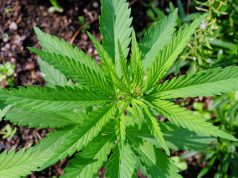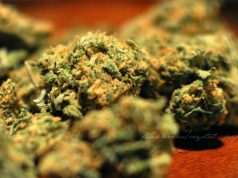Where does chromatography fit in the cannabis industry?
For purification and testing in the cannabis and hemp-derived CBD industries, chromatography plays a vital role. While chromatography has mainly been used for testing labs and larger manufacturers, RotaChrom Technologies is making these tools available to a wider swath of businesses.
The cannabis and CBD industries utilize chromatography extensively in labs to separate cannabis extracts. These extracts will either be used for analysis of a sample or to purify an extract, or even to isolate or remove specific compounds like cannabinoids. Chromatography is very helpful for accurately measuring levels of cannabinoids and terpenes, as well as checking for potential contaminants such as pesticides, heavy metals and residual solvents.
Until recently, chromatography has primarily been used by the cannabis industry for these aforementioned types of quality testing. Due to third-party lab testing mandates for the legal cannabis markets throughout the U.S., chromatography is also tightly linked to cannabis safety.
However, this is not all chromatography can be used for. This technology can also be effective in purifying cannabis extracts or isolating certain compounds within the extract itself. As the cannabis industry continues to grow to more states and the use of cannabis extracts increases, the technology necessary for mass production must evolve to meet the increased demand. The need for chromatography will be critical to meeting demand.
Replacing Legacy Chromatography for the Cannabis Industry and Beyond
Like other botanical and pharmaceutical products, molecular compounds are found in cannabis and hemp that have unique properties and individual value when extracted and isolated. Although these separation processes were initially designed with laboratory analysis in mind, the current state of the cannabis and hemp industries highlights the necessity for increased capacity and throughput with industrial-scale chromatographic processes for commercial applications.
It has long been held that only large companies have had the ability to access the most effective and efficient purification methods. This has been a serious disadvantage for startups and small businesses because these smaller entities need to turn to third parties or wholesalers to source the high-quality purified cannabis extracts needed for their products.
This issue is one that has affected other industries beyond cannabis and hemp. Recognizing the shortcomings of the legacy processes, RotaChrom’s engineers set out to resolve the problems. The inventors of RotaChrom’s technology came to the scene with extensive experience in the pharmaceuticals industry, which gave them a unique insight into ingredient purification technology. RotaChrom’s work began 15 years ago in an effort to improve the way businesses purify raw materials, and they developed the first commercial Centrifugal Partition Chromatography (CPC) system. This innovative technology platform allows for industrial-scale purification for many industries, including cannabis.
RotaChrom’s technology ensures cost-effective purification is available for smaller-sized businesses and can be used to purify raw materials with greater consistency, including creating THC-free broad-spectrum extracts or isolating specific cannabinoids like CBD or CBN, to name a few. This move from legacy chromatography puts the platform into the hands of mid-range companies looking to move processing of cannabis extracts in-house, giving them greater control over extract quality and the ability to maintain exact specifications.
RotaChrom’s CPC platform also has environmental benefits. The technology is green, as it requires less solvent consumption than legacy chromatography and produces far less waste since up to 98 percent of solvent material is recoverable and reusable in the system. The ability to recycle this amount of the solvent also reduces operating costs for businesses using this technology.
Another key benefit and differentiator from legacy chromatography is the ability for the platform to scale with businesses as they grow, offering a choice in hardware to fit capacity needs. The technology is also adaptable to create cannabis and CBD extracts of differing purities and composition on the same machine, so you can continue to innovate your brands. A dynamic purification solution, RotaChrom’s instruments keep businesses competitive in a booming and fast-changing cannabis industry.
Mid-sized cannabis companies that are growing due to the expanding industry and are ready to move the purification process to their own facility are trading their current supply woes for the ability to closely control ingredient purity, which gives them an edge over competitors. Versatility and quick scalability with chromatography is the advantage needed to reach that next level.
As the legal cannabis and hemp industries continue to gain momentum, improving the ability for companies to jump to industrial-scale production and the need to create purified products in a cost-effective manner will only continue to grow as well. While the legal landscape continues to evolve, one thing seems to remain the same – technologies like chromatography are paving the way for commercial cannabis production to grow.







Cannabis growers should be aware of their plants cannabinoid levels, but the 0.03% THC limit for hemp is a false distinction created by the government. That is why cannabis plants have to be grown under strict conditions so they can be proved to be hemp, or be destroyed for being marijuana.
“Hemp” originally referred to cannabis fibers. The rhetoric of metonymy was used to identify cannabis plants that were more valued for their fibers, as hemp plants. Such plants typically had lesser amounts of THC. The inaccurate Federal definition of hemp is based on cannabis THC%, not on its fibers, thus corrupting its historical metonymy. Is there a test that measures fiber content and qualities?
Likewise, “marijuana” originally referred to cannabis smoke. The rhetoric of metonymy was used to identify cannabis plants that were more valued for smoking, as marijuana plants. Such plants typically had greater amounts of THC. The inaccurate Federal definition of marijuana allows any cannabis plant, not its smoke, to be misconstrued as being marijuana, thus corrupting its historical metonymy.
Of course, all cannabis plants have fibers and can be smoked, so knowing the plant’s cannabinoid levels is valuable information. Chromatography and extract blending are also becoming important processes in the cannabis industry.
Accurately defining marijuana at the federal level will carefully deschedule all cannabis plants for citizens, and render superfluous the inaccurate definition of hemp. Congress can accurately define marijuana with appropriate controls, if people tell them how, like this:
(21 U.S.C. 802(16)) The term “marijuana” means all parts of the smoke produced by the combustion of the plant Cannabis sativa L., which is, as are the viable seeds of such plant, prohibited to be grown by or sold by any publicly traded corporation or subsidiary company, and such smoke is prohibited to be inhaled by any child or by any person bearing any firearm, as is their intake of any part or any product of such plant containing more than 0.3% THC by weight unless prescribed to such child by an authorized medical practitioner.